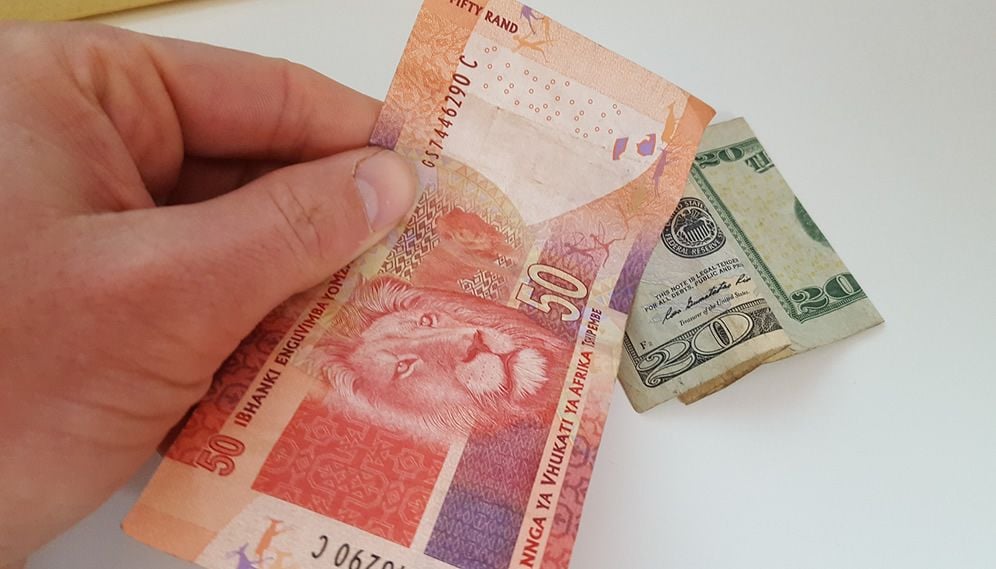South African Rand Headed to 11.0 Against US Dollar as Markets Cheer Budget
- Written by: James Skinner

© Gary Howes, Pound Sterling Live
Treasury has been under pressure to set out concrete revenue raising measures in order to preserve its investment grade credit rating and, on Wednesday, it appeared to have delivered.
The Rand rose strongly against a majority of its international counterparts in London Wednesday as markets cheered the unveiling of the latest South African budget, which bore a raft of measures designed to correct a rising budget deficit.
While the Treasury's plans still leave South Africa staring down the barrel of a large income deficit and a rising debt pile for at least the next three years, Wednesday’s market reaction suggests it may have been enough to avert a downgrade of its local currency credit rating by Moody’s.
Finance Minister Malusi Gigaba announced South Africa will raise an estimated ZAR 36 billion in the current year from VAT tax increases, through a 1% increase in the VAT rate, and below inflation adjustments to payroll tax brackets for workers.
Treasury will also increase sales taxes on luxury consumer items and high value real estate, while raising excise duties for alcohol and tobacco.
However, although Treasury has raised large sums through tax increases it has also affirmed prior commitments to similarly large increases in public spending, mainly in the areas of tertiary educations and healthcare.
The combination of higher taxes and higher spending will mean the South African budget deficit falls from an estimated 4.3% of GDP in the 2017/18 year, to 3.5% of GDP in the 2020/21 year, according to Treasury estimates.
This is expected to see the country’s debt pile stabilize at a level equivalent to 56.2% of GDP by the end of the 2022 year.
The USD/ZAR rate was quoted 0.86% lower at 11.62 as a result of the announcement while the Pound-to-Rand rate was 1.45% lower at 16.17.
South Africa's Rand has risen by nearly 5.8% against the US Dollar in 2018 and by 2.5% against Sterling.
"Positive signs of reform are now evident. The deficit for FY19 will now narrow to 3.6% (lower than the 3.9% outlined in the MTBPS), exactly in line with our forecast," says Razia Khan, chief EMEA economist at Standard Chartered.
"However, the projected deficits for FY20 and 21, at 3.6% and 3.5%, respectively, are wider than we had hoped, signalling limited plans (for now) for more ambitious fiscal consolidation."
Treasury has been under pressure to set out concrete revenue raising measures in order to preserve its investment grade local currency credit rating as a downgrade could be devastating for South Africa.
A downgrade to “junk” status means exclusion from the Citi World Government Bond index and would be likely to see institutional investors forced into selling their government bonds.
This would push South African borrowing costs higher and put downward pressure on the Rand once again as foreign investors flee the country.
Moody's said in November that its determination on whether to remove South Africa's local currency investment grade credit rating may not come until after the February budget statement.
“Our base case is that the budget has likely done enough to avert a Moody’s downgrade of South Africa in late March, by which time the negative watch on South Africa’s rating must be resolved,” says Khan.
“This is partly because the budget measures (with the 1ppt rise in the rate of VAT, even ahead of an election) demonstrate political resolve to try to rein in the fiscal deficit.”
“This is partly because the budget measures demonstrate political resolve to try to rein in the fiscal deficit. It is mostly because South Africa’s political transition and renewed optimism have raised hopes that growth and governance will improve significantly in the years ahead.”
In addition to the all-important budget statement, February also saw a changing of the guard in South African politics, with the scandal plagued Jacob Zuma resigning from office in order for his reformist deputy Cyril Ramaphosa to take the helm.
This has been seen clearing the way for far reaching economic and political reform, with an emphasis on corruption in government and governance of state owned enterprises.
"We expect markets to continue to price in a reduced likelihood that South Africa is subjected to World Government Bond Index (WGBI) exclusion," says Khan.
"This is line with our forecast for continued South African rand (ZAR)gains over the course of this year, in part also reflecting a weaker USD, with an eventual test of 11.00 remaining possible."
Wednesday, Finance Minister Gigaba also pledged further reforms to the web of debt guarantees the Treasury has provided to state owned enterprises.
This is a landmark step because Moody’s, the sole agency to still rate South African debt as investment grade, cited rising government guarantees for as one of the many reasons behind its decision to place the country “on review for downgrade” back in November last year.
Since then, now-President Cyril Ramaphosa has replaced the board of state power utility Eskom, which is beset by cash-flow problems, and accounts for more than half of all South African government guarantees to state owned companies.
The South African Treasury is on the hook for as much as ZAR 350 billion (£21 billion) of Eskom’s debt and a further ZAR 330 billion of additional debt held by other state owned enterprises. A total ZAR 680 billion of government debt guarantees are equivalent to around 10% of South African GDP.
Advertisement
Get up to 5% more foreign exchange by using a specialist provider to get closer to the real market rate and avoid the gaping spreads charged by your bank when providing currency. Learn more here.




